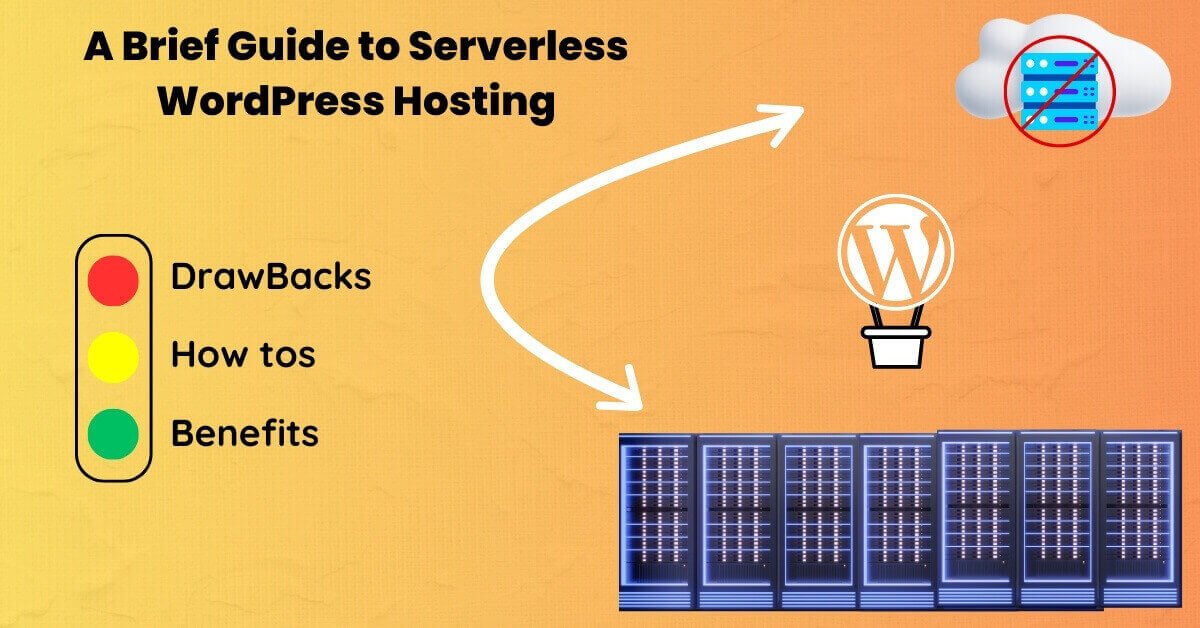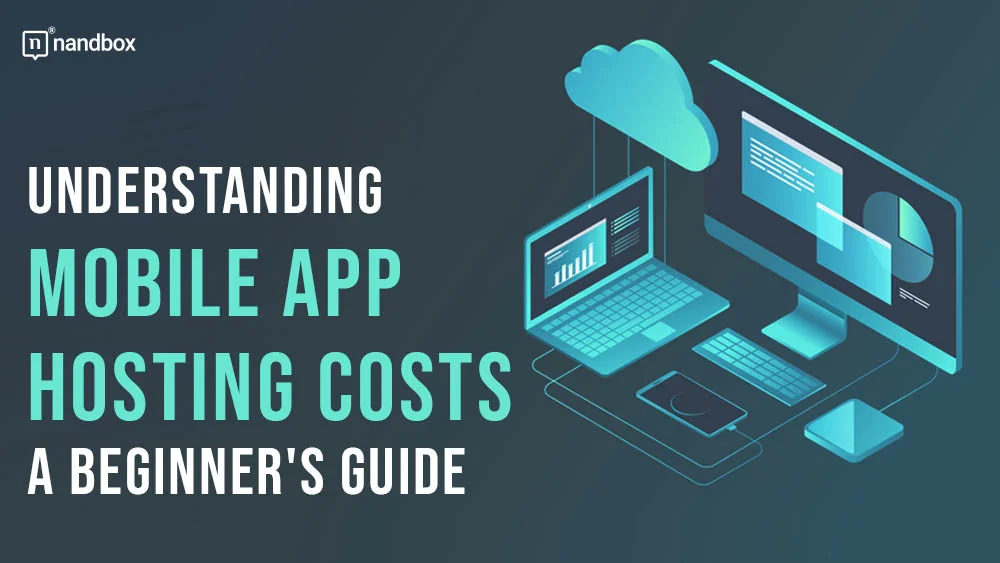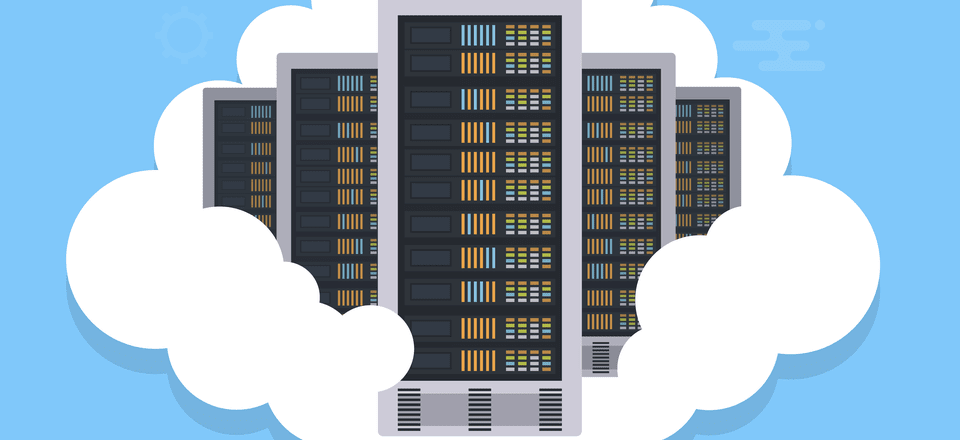Serverless hosting is changing web development. It's simple and efficient.
But what is serverless hosting, and how can beginners start using it? Serverless hosting means no need to manage servers. This approach lets developers focus on writing code. It handles everything else automatically, like scaling and maintenance. Imagine deploying a website without worrying about server configurations.
Sounds great, right? This guide will introduce you to serverless hosting, explaining how it works and why it is popular. Beginners will learn the basics and discover how serverless can simplify hosting tasks. By the end, you'll understand how serverless hosting can make web development easier and more accessible. Dive in and explore how this innovative approach can benefit your projects today.
Introduction To Serverless Hosting
Serverless hosting is changing how websites function. No need for physical servers. This approach simplifies processes for developers. It allows flexibility and cost efficiency. If you want to understand this method, start here. This guide introduces the basics.
What Is Serverless?
Serverless means no server management. Sounds simple, right? But it goes deeper. Developers focus on code. They don't worry about server upkeep. Cloud providers handle the server's operations. This means less hassle for developers.
Serverless isn't about having no servers. The servers are hidden from developers. They run code in response to events. This makes development faster. It's a new way to build apps and websites.
Benefits Of Going Serverless
Serverless hosting offers many benefits. First, it saves money. You pay for what you use. No extra cost for idle servers.
Second, it scales automatically. Your app can handle more users without extra work. Third, it's reliable. Cloud providers offer strong security and uptime.
Serverless hosting frees developers from server management. They can focus on building better apps. This boosts productivity and creativity.
Key Components Of Serverless Architecture
Understanding serverless architecture can seem complex at first. Yet, it's quite straightforward once you grasp its key components. Serverless architecture shifts traditional server management to cloud services. This means developers can focus on writing code without worrying about server maintenance. Let's explore the two main components of serverless architecture: Functions as a Service (FaaS) and Backend as a Service (BaaS).
Functions As A Service
Functions as a Service, or FaaS, is an essential serverless component. It allows developers to run code in response to events. This means no need for server provisioning or management. Simply upload your code, and the cloud provider handles execution. FaaS is ideal for tasks that need scaling. It automatically scales based on demand. This ensures efficient use of resources. FaaS promotes a pay-per-use model, reducing costs. You pay only for the compute time you use. Popular FaaS providers include AWS Lambda and Google Cloud Functions.
Backend As A Service
Backend as a Service, or BaaS, simplifies backend development. It provides ready-to-use services for applications. BaaS handles tasks like user authentication, database management, and storage. This allows developers to focus on frontend development. BaaS reduces the complexity of building and managing backends. It offers scalable solutions without the need for server maintenance. Firebase and AWS Amplify are popular BaaS platforms. They offer robust features for app development. BaaS is perfect for small teams or startups.
Popular Serverless Providers
Exploring serverless hosting? Amazon Web Services, Google Cloud Platform, and Microsoft Azure stand out as top choices. These providers offer user-friendly services, making it easier for beginners to manage applications without server maintenance.
When you're diving into serverless hosting, choosing the right provider is crucial. The provider you select can significantly impact your project's success, scalability, and cost-effectiveness. Let's look at two of the most popular serverless providers: AWS Lambda and Google Cloud Functions. ###Aws Lambda
AWS Lambda is a go-to choice for many developers venturing into serverless hosting. It allows you to run code without provisioning or managing servers. This can save you a lot of time and headaches. AWS Lambda supports multiple programming languages, making it versatile for diverse projects. If you're already using other AWS services, Lambda integrates seamlessly. This can streamline your development process and enhance functionality. One personal insight: during a project, switching to AWS Lambda reduced our infrastructure costs by 30%. This is a game-changer for startups or small businesses with tight budgets. Have you considered how much you could save with AWS Lambda? ###Google Cloud Functions
Google Cloud Functions offers an equally compelling serverless solution. It's designed to handle background functions, real-time data processing, and more. If your project relies heavily on other Google services like Firebase or Google Cloud Storage, this might be your best bet. One of the standout features of Google Cloud Functions is its simplicity. You can deploy functions quickly with a few commands. It's perfect for developers who value speed and efficiency. During one of my projects, we used Google Cloud Functions to handle data processing tasks. The speed and reliability were impressive, making it easier to meet tight deadlines. Could this simplicity and speed benefit your project? Both AWS Lambda and Google Cloud Functions offer robust serverless solutions. The choice often depends on your specific needs and existing technology stack. Which provider aligns with your goals and resources?
Credit: www.splunk.com
Setting Up Your First Serverless Project
Discover the ease of launching your first serverless project. This beginner's guide simplifies serverless hosting for newcomers. Dive into cloud-based solutions without managing servers, streamlining deployment and scalability.
Setting up your first serverless project might feel like stepping into the unknown, but it's an exciting opportunity to leverage modern technology without the traditional complexities. Serverless hosting allows you to run your applications without managing the underlying infrastructure. This means you can focus more on writing great code and less on server maintenance. Let's dive into the initial steps and see how you can get started smoothly.Choosing The Right Provider
Selecting the right serverless provider is crucial. AWS Lambda, Azure Functions, and Google Cloud Functions are popular options. Each offers unique features and pricing models. Consider what fits your project needs. AWS Lambda is known for its broad integration with other AWS services, making it great if you're already in the AWS ecosystem. Azure might be ideal if you're working with Microsoft products. Google offers strong support for real-time applications. Research and compare. Look at factors like pricing, supported languages, and ease of use. A good fit will simplify your development process and maximize your project's potential.Basic Setup Steps
Once you've chosen a provider, setting up your first serverless project involves a few straightforward steps. Start by creating an account with your chosen provider. Next, familiarize yourself with their dashboard. Each provider offers documentation and tutorials. Use these resources to understand the basic concepts. Deploy your first function. For example, with AWS Lambda, you can write a simple “Hello, World” function. This initial deployment builds your confidence and provides a hands-on understanding of serverless operations. Don't forget to test. Ensure your function runs as expected and make adjustments as needed. Testing is crucial to catch any errors early in the process. Have you ever wondered how serverless can scale your project effortlessly? As you progress, you'll discover how these initial steps lay the foundation for more complex applications. Engage with the community, seek out forums, and learn from others' experiences. Your journey into serverless hosting is just beginning, and the possibilities are endless.Best Practices For Serverless Development
Serverless development offers a fresh approach to building applications. It simplifies infrastructure management by using cloud services. This method is gaining popularity for its scalability and efficiency. Yet, to harness its full potential, following best practices is essential. Here, we explore key strategies for optimizing your serverless applications.
Optimizing Function Performance
Performance is crucial for serverless applications. To boost speed, keep functions small and focused. A single task per function is ideal. This reduces execution time and enhances responsiveness. Also, minimize dependencies. Each extra dependency can slow down functions. Use only necessary libraries. Regular testing helps find bottlenecks. Continuous evaluation ensures peak performance.
Managing Costs Effectively
Cost management is vital in serverless hosting. Pay attention to function execution time. Longer running functions incur higher costs. Optimize code to reduce runtime. Use efficient algorithms and data structures. Monitor resource usage closely. Cloud providers offer tools to track expenses. Set alerts for unexpected cost spikes. Adjust configurations to align with budget constraints. Proper management saves money without sacrificing performance.
Common Challenges And Solutions
Starting with serverless hosting can be confusing due to its complexity and lack of hands-on control. Understanding event-driven architecture helps manage tasks efficiently. Learning to optimize costs by monitoring usage can solve unexpected billing issues.
Embarking on the journey of serverless hosting can be both exciting and daunting. While the promise of scalability and reduced maintenance is appealing, beginners often encounter common challenges. Understanding these hurdles and their solutions can make your serverless experience smoother and more rewarding. ###Cold Starts And Their Impact
One of the most talked-about challenges in serverless architecture is cold starts. Cold starts occur when a serverless function is invoked after being idle, leading to a delay as the infrastructure spins up. This can impact user experience, especially in applications requiring real-time responses. To mitigate cold starts, consider keeping your functions warm by invoking them at regular intervals. Use tools or scripts to ping your functions, minimizing the chance of a cold start. Also, optimize your code and dependencies to reduce initialization time, making your functions quicker to respond. ###Monitoring And Debugging
Monitoring and debugging serverless applications can feel like searching for a needle in a haystack. Traditional logging methods might not suffice due to the distributed nature of serverless functions. This can lead to difficulties in identifying and resolving issues efficiently. Utilize cloud provider tools and third-party services for comprehensive monitoring and logging. Implement structured logging to capture detailed insights into your function executions. Remember, a well-monitored application not only helps in resolving issues but also in understanding user behavior and optimizing performance. Have you ever felt lost while debugging a serverless application? You're not alone. Integrating robust monitoring solutions can turn confusion into clarity, allowing you to focus on innovation rather than firefighting. Facing these challenges head-on, equipped with the right strategies, turns serverless hosting from a daunting task into an empowering experience. Your application users will thank you for the seamless experience, and you’ll appreciate the peace of mind that comes with a well-oiled serverless setup.Real-world Applications Of Serverless
Serverless hosting is gaining popularity for its real-world applications. It offers flexibility, scalability, and cost-efficiency. Businesses of all sizes can benefit from serverless technology. It helps streamline processes and reduce operational costs. Let's explore some practical applications of serverless hosting.
E-commerce Platforms
E-commerce platforms face fluctuating traffic. During sales, traffic spikes can overwhelm servers. Serverless hosting handles these spikes effortlessly. It scales automatically with demand. This ensures a smooth shopping experience for users. No manual intervention is needed to manage resources. Serverless functions can run backend operations efficiently. Payment processing, inventory updates, and user authentication become seamless. This allows businesses to focus on customer satisfaction.
Real-time Data Processing
Real-time data processing is crucial in today's digital age. Serverless hosting excels in handling data streams. It processes information quickly and efficiently. Data from sensors, social media, and IoT devices is analyzed in real-time. This helps businesses make timely decisions. Serverless functions can filter, aggregate, and transform data instantly. The system responds to incoming data without delay. This is essential for industries like finance and logistics. They rely on accurate, up-to-date information for decision-making.

Credit: wpedify.com
Future Trends In Serverless Technology
Serverless hosting is gaining popularity due to its flexibility and cost-effectiveness. Future trends indicate increased automation, with tools simplifying deployment and management. Many businesses are exploring serverless solutions to enhance scalability and performance without the need for extensive infrastructure.
As serverless hosting continues to gain traction, it's crucial to keep an eye on the future trends that are shaping this technology. These trends not only promise to improve the efficiency and scalability of serverless solutions but also aim to make them more secure and versatile. From enhancing security measures to integrating with edge computing, the future of serverless is packed with innovations that can transform how you handle web hosting.Advancements In Security
Security is a major concern for anyone managing web applications. In serverless technology, the focus is shifting towards stronger, more flexible security protocols. For instance, serverless platforms are now embedding more advanced threat detection systems, which can identify vulnerabilities before they become a problem. Providers are also offering more robust identity and access management tools. These tools help you control who can access your serverless applications and data, adding an extra layer of protection. As a user, you’ll find more options to customize security settings, making it easier to safeguard your applications. Have you ever worried about data breaches when scaling your application? Serverless providers are addressing this by encrypting data both in transit and at rest, ensuring your information is safe at all times.Integration With Edge Computing
Edge computing is reshaping how and where data is processed, and it’s a natural partner for serverless technology. By processing data closer to the source, you can reduce latency and improve the performance of your applications. Imagine your application responding faster because it processes requests closer to where they originate. Serverless and edge computing together allow for more efficient handling of real-time data. This is particularly beneficial for applications that rely on instant data processing, such as IoT devices or real-time analytics. You'll experience smoother, faster interactions without the lag that can plague centralized systems. Are you wondering how this affects scalability? With edge computing, serverless applications can scale more dynamically, allocating resources exactly where needed. This means you can accommodate sudden spikes in traffic more efficiently, without compromising performance. By understanding these trends, you can better prepare for the future of serverless technology. Whether you're concerned about security or eager to leverage the benefits of edge computing, staying informed will help you make smarter choices for your hosting needs. What steps will you take to ensure your applications are ready for these advancements?
Credit: nandbox.com
Frequently Asked Questions
What Is Serverless Hosting?
Serverless hosting allows developers to run code without managing servers. It automatically scales resources based on demand, reducing costs. Developers focus on writing code while the platform handles infrastructure tasks. It's ideal for applications with unpredictable workloads, offering flexibility and efficiency.
Serverless services include AWS Lambda, Azure Functions, and Google Cloud Functions.
How Does Serverless Hosting Work?
Serverless hosting operates by executing code in response to events. It abstracts server management, enabling developers to focus on functionality. When an event triggers, the platform allocates resources and runs the code. This model automatically scales and charges only for usage, optimizing resource management and reducing overhead.
What Are The Benefits Of Serverless Hosting?
Serverless hosting offers automatic scaling, reduced costs, and faster deployment. It eliminates server management, freeing developers to focus on code. Pay-per-use pricing lowers expenses, while the architecture adapts to varying workloads. This flexibility enhances efficiency and supports rapid innovation, making it ideal for modern applications.
Is Serverless Hosting Secure?
Serverless hosting is generally secure, but requires careful configuration. Providers offer security features like encryption and authentication. Developers must implement best practices to avoid vulnerabilities. Regular monitoring and updates help protect applications. While serverless abstracts infrastructure, security responsibility remains shared between providers and developers.
Conclusion
Serverless hosting simplifies web management for beginners. No need to manage servers. Focus remains on developing your application. Resources scale automatically, saving time and effort. Cost-effective for startups with tight budgets. Flexibility allows quick adjustments and growth. Understand basics before diving in.
Experiment with small projects first. Embrace the freedom it offers. Serverless can change how you approach web hosting. It's a useful tool in modern tech. Start with simple services to learn more. Enjoy the journey into serverless hosting.
{ “@context”: “https://schema.org”, “@type”: “FAQPage”, “mainEntity”: [ { “@type”: “Question”, “name”: “What is serverless hosting?”, “acceptedAnswer”: { “@type”: “Answer”, “text”: “Serverless hosting allows developers to run code without managing servers. It automatically scales resources based on demand, reducing costs. Developers focus on writing code while the platform handles infrastructure tasks. It's ideal for applications with unpredictable workloads, offering flexibility and efficiency. Serverless services include AWS Lambda, Azure Functions, and Google Cloud Functions.” } } , { “@type”: “Question”, “name”: “How does serverless hosting work?”, “acceptedAnswer”: { “@type”: “Answer”, “text”: “Serverless hosting operates by executing code in response to events. It abstracts server management, enabling developers to focus on functionality. When an event triggers, the platform allocates resources and runs the code. This model automatically scales and charges only for usage, optimizing resource management and reducing overhead.” } } , { “@type”: “Question”, “name”: “What are the benefits of serverless hosting?”, “acceptedAnswer”: { “@type”: “Answer”, “text”: “Serverless hosting offers automatic scaling, reduced costs, and faster deployment. It eliminates server management, freeing developers to focus on code. Pay-per-use pricing lowers expenses, while the architecture adapts to varying workloads. This flexibility enhances efficiency and supports rapid innovation, making it ideal for modern applications.” } } , { “@type”: “Question”, “name”: “Is serverless hosting secure?”, “acceptedAnswer”: { “@type”: “Answer”, “text”: “Serverless hosting is generally secure, but requires careful configuration. Providers offer security features like encryption and authentication. Developers must implement best practices to avoid vulnerabilities. Regular monitoring and updates help protect applications. While serverless abstracts infrastructure, security responsibility remains shared between providers and developers.” } } ] }

